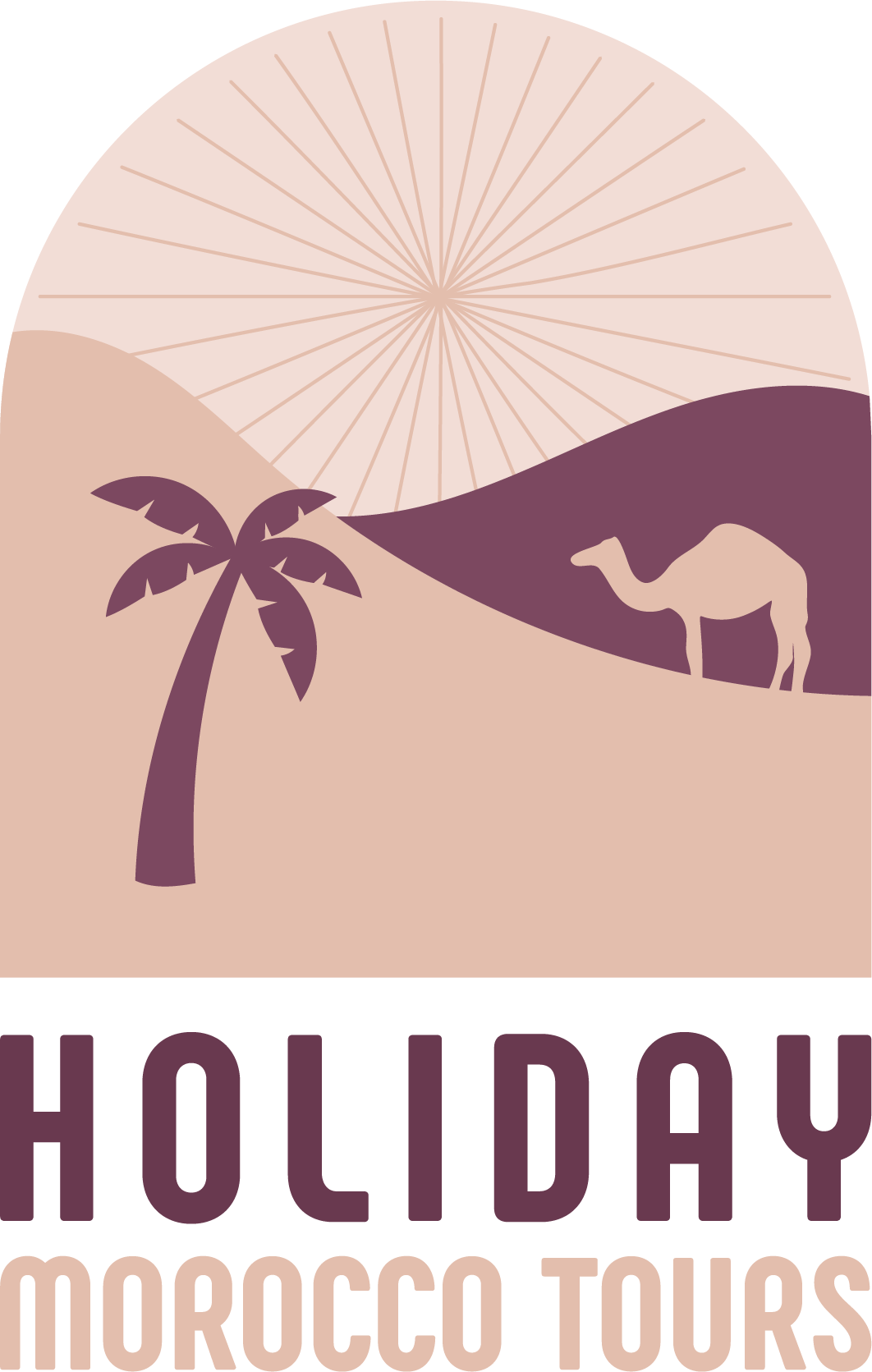Morocco’s Imperial Cities: Unlocking the Secrets of Ancient Kingdoms
Nestled at the crossroads of history and culture, Morocco’s imperial cities offer travelers a journey through time. Unlike any other destinations in the country, these cities, Marrakech, Fes, Meknes, and Rabat, tell stories of ancient dynasties, bustling souks, and architectural marvels that have withstood the test of centuries. From the intricate mosaics of a centuries-old palace to the lively chatter of artisans in the medina, each corner reveals the heart of Morocco’s rich heritage.
But these cities are not just relics of the past; they are living, breathing hubs of Moroccan life. Walking through the streets, you’ll encounter vibrant markets, aromatic spices, and the warm hospitality of locals who proudly share their traditions. Whether it’s the majestic gates of Meknes, the spiritual allure of Fes, or the modern charm of Rabat, each imperial city has its own unique story waiting to be discovered.
In this guide, we’ll dive into the history, culture, and must-see sights of Morocco imperial cities, helping you plan an unforgettable journey through the heart of the kingdom.
The History Behind Morocco’s Imperial Cities
Dynasties That Shaped Morocco
Morocco’s imperial cities, Marrakech, Fes, Meknes, and Rabat, aren’t just ordinary cities; they are living testaments to centuries of dynastic power. Each city rose to prominence under different ruling dynasties, leaving an indelible mark on Morocco’s architecture, culture, and society. The Almoravid dynasty founded Marrakech in the 11th century, transforming it into a political and cultural hub. Meanwhile, Fes, established in the 8th–9th centuries by the Idrisid dynasty, became Morocco’s spiritual and intellectual center, home to the world’s oldest university, Al-Qarawiyyin.
Meknes, often called the “Versailles of Morocco,” was elevated to imperial status by Sultan Moulay Ismail in the 17th century. The city’s grand gates, sprawling palaces, and fortified walls reflect the sultan’s ambition and architectural vision. Finally, Rabat, now the modern capital, grew under the Alaouite dynasty, blending historical significance with contemporary governance. Together, these cities form the backbone of Moroccan history, each telling a story of power, artistry, and resilience.
Why These Cities Were Chosen as Capitals
The selection of imperial cities in Morocco was never random; strategic location, trade routes, and natural resources played key roles. Fes, situated inland, became a cultural and religious stronghold due to its proximity to fertile lands and caravan routes. Marrakech, near the Atlas Mountains, offered access to both desert trade routes and fertile plains, making it ideal for military and economic control. Meknes was chosen for its proximity to agricultural lands and Roman ruins, symbolizing continuity and prestige. Rabat’s coastal location made it a natural choice for defense and diplomacy with Europe.
Beyond logistics, each city was deliberately designed to reflect the grandeur of the ruling dynasty, with monumental gates, royal palaces, and meticulously planned medinas. Visiting these cities today, travelers can still feel the echoes of past rulers, from the echoing courtyards of palaces to the winding alleys of centuries-old medinas.
Fes: The Spiritual and Cultural Heart
Fes, often called the spiritual capital of Morocco, is a city where history breathes through every winding alley, ornate doorway, and bustling marketplace. Known for its ancient medina, Fes el-Bali, the city has preserved a rich cultural and religious heritage that has captivated travelers for centuries. Visiting Fes is like stepping into a living museum, where Morocco imperial cities reveal their deepest secrets through architecture, traditions, and daily life.
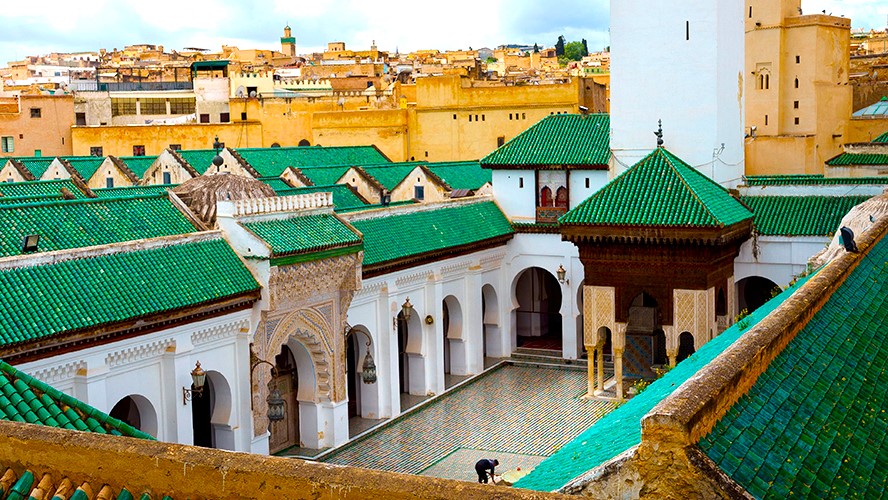
The Ancient Medina of Fes
The medina of Fes is a UNESCO World Heritage site and one of the largest car-free urban areas in the world. Walking through its labyrinthine streets, visitors encounter vibrant souks selling everything from handwoven textiles to intricate leather goods. The streets themselves tell stories, narrow alleys leading to hidden fountains, centuries-old mosques, and artisan workshops where traditional crafts have been preserved for generations. One cannot help but feel transported back in time, experiencing Morocco’s history firsthand.
Al-Qarawiyyin University: A UNESCO Gem
Fes is also home to Al-Qarawiyyin University, recognized as the oldest continually operating university in the world. Founded in 859 AD, it has been a center of Islamic learning, attracting scholars from across the globe. The university’s library and mosque showcase the architectural brilliance of the era, with intricate woodwork, geometric patterns, and centuries-old manuscripts that remain preserved to this day. For travelers, a visit offers both historical insight and a deeper appreciation for Morocco’s intellectual legacy.
Traditional Crafts and Artisans
Fes is synonymous with artisan craftsmanship. From the world-famous tanneries where leather is dyed using centuries-old techniques, to pottery workshops and handwoven textiles, every corner of the city reflects Morocco’s dedication to artistry. Visitors can observe artisans at work, learning about the meticulous processes behind each creation. These crafts are not just souvenirs—they are living pieces of Morocco’s history, connecting modern visitors to traditions that have endured for over a millennium.
Why Fes Stands Out Among MOROCCO’S Imperial Cities
Fes represents the intellectual and spiritual heart of Morocco. While Marrakech may dazzle with markets and gardens, and Meknes impresses with grand palaces, Fes captivates through its depth of history and authenticity. It is a city where travelers can immerse themselves fully, wandering through centuries-old streets, listening to the call to prayer echoing from minarets, and feeling the pulse of Moroccan life that has remained unchanged for generations.
Marrakech: The Red City of Adventure
Marrakech, often called the Red City due to the distinctive hue of its buildings, is one of the most vibrant Morocco imperial cities. Bursting with color, scents, and sounds, Marrakech offers a sensory journey unlike any other. From bustling souks to serene gardens, this city perfectly blends history, culture, and modern energy.
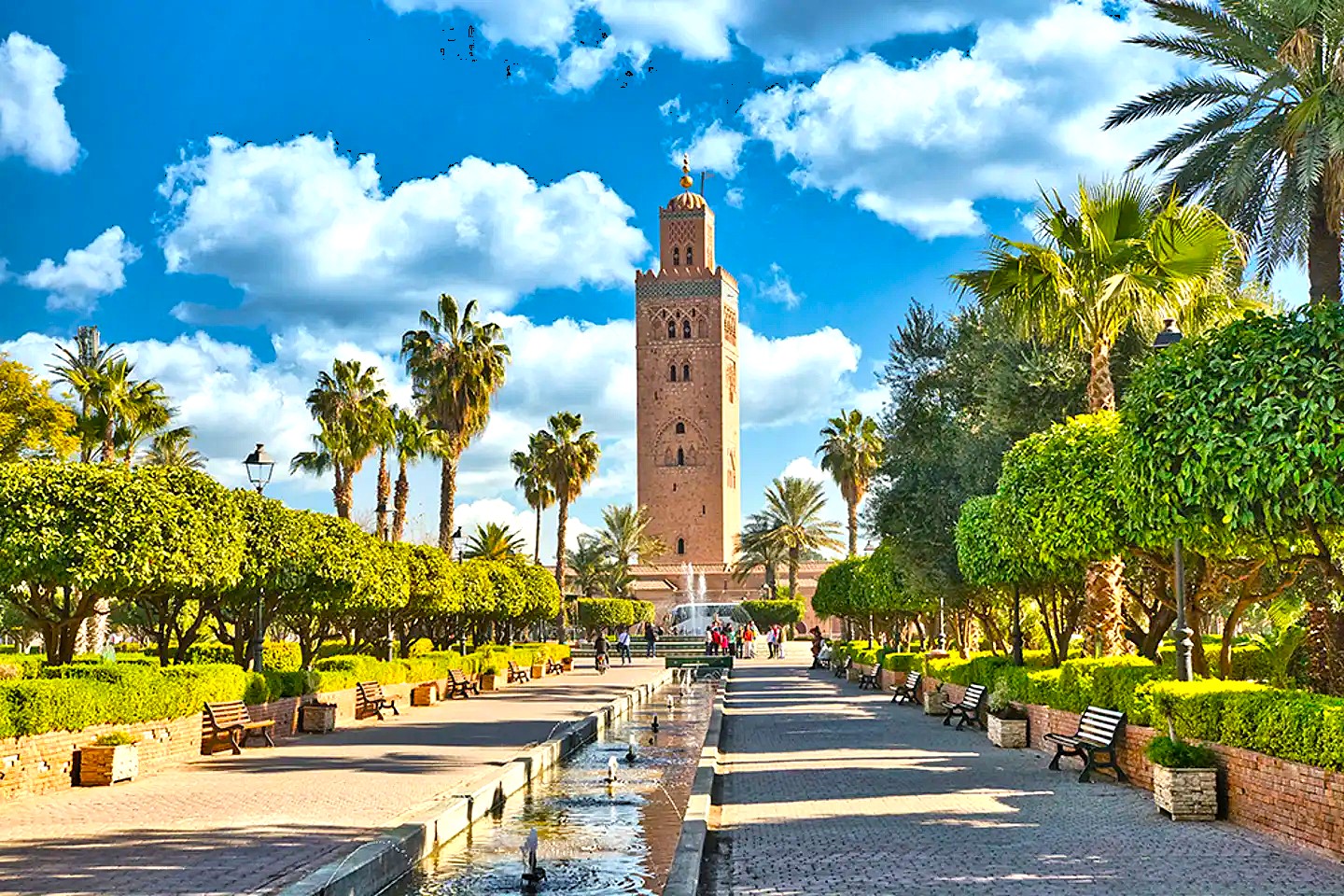
Jemaa el-Fnaa: A Living Marketplace
At the heart of Marrakech lies Jemaa el-Fnaa, a UNESCO-recognized square where tradition meets spectacle. By day, the square is a hub for merchants, street performers, and snake charmers; by night, it transforms into a lively food market, serving fragrant Moroccan dishes. The square has been the beating heart of Marrakech for centuries, and walking through it is like stepping into a living theater where every corner tells a story.
Majestic Palaces and Gardens
Marrakech’s grandeur is visible in its palaces and gardens. The Bahia Palace, built in the 19th century, showcases the finest of Moroccan architecture with its intricate tile work, stucco carvings, and expansive courtyards. For a quieter escape, the Majorelle Garden, once owned by French painter Jacques Majorelle and later restored by Yves Saint Laurent, offers a peaceful oasis filled with exotic plants and vibrant colors. These landmarks reveal the artistic sophistication that Marrakech has cultivated over centuries.
The Saadian Tombs and Historical Sites
Hidden behind unassuming walls lie the Saadian Tombs, the resting place of the Saadian dynasty’s sultans from the 16th century. Rediscovered in 1917, the tombs are a testament to the ornate craftsmanship and architectural ingenuity of Morocco’s past. Beyond these tombs, the city is dotted with historic mosques, madrasas, and city gates, each telling a piece of Marrakech’s imperial story.
Why Marrakech Shines Among MOROCCO’S Imperial Cities
Marrakech captivates travelers through its energy and contrasts. The medina’s chaos, the palace gardens’ serenity, the aromatic food stalls, and the sound of local musicians create a city alive with discovery. Unlike other Morocco’s imperial cities that focus on spiritual or intellectual heritage, Marrakech offers an immersive adventure, engaging all senses while preserving the historical depth that makes these cities so unique.
Discover Morocco’s imperial cities Today!
If you’re ready to discover the wonders of Morocco’s imperial cities firsthand, our experts at Holiday Morocco Tours can help you plan your unforgettable journey. From tailored itineraries to insider tips, we ensure your adventure through Morocco’s historic gems is seamless, immersive, and truly unforgettable.
Don’t just read about Morocco’s imperial cities, experience their magic firsthand!
Meknes: Morocco’s Versailles
Meknes, often referred to as the “Versailles of Morocco,” is one of the lesser-known yet captivating Morocco imperial cities. While it may not have the fame of Marrakech or Fes, Meknes boasts grand architecture, expansive palaces, and a fascinating history that transports visitors to the era of sultans and dynasties.
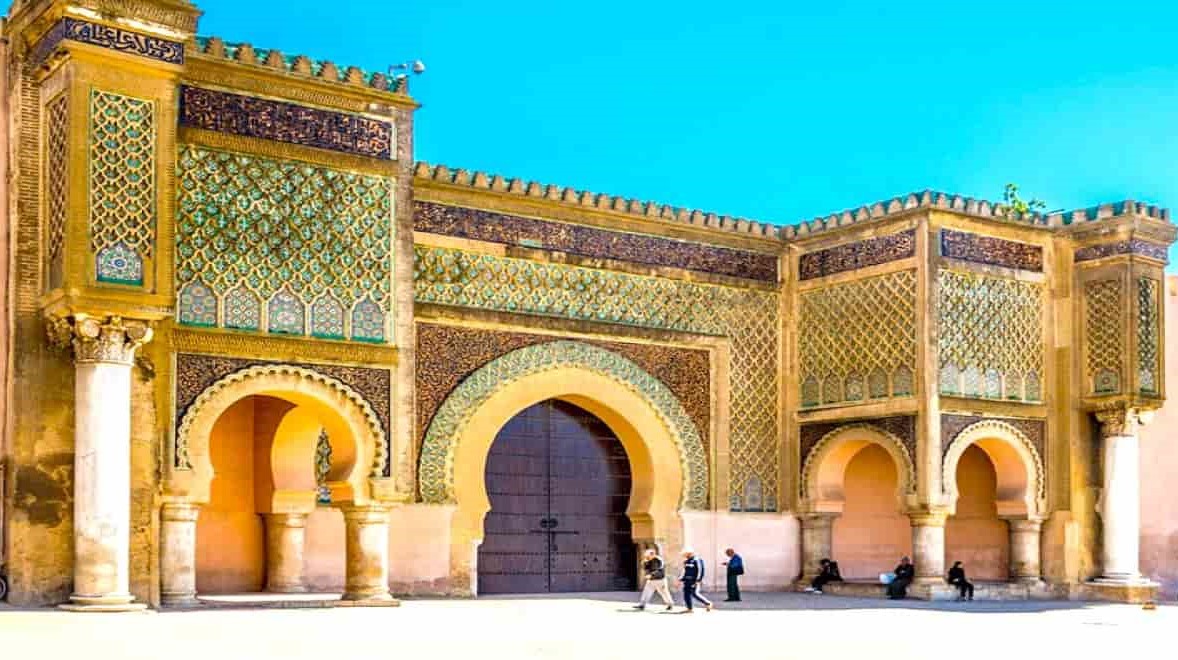
The Imperial Gates and Mausoleums
Meknes is renowned for its Bab Mansour, one of the most impressive city gates in Morocco. Built during the reign of Sultan Moulay Ismail in the 17th century, the gate is adorned with elaborate mosaic tiles, marble columns, and inscriptions that showcase the artistic mastery of Moroccan craftsmen. Nearby, the Mausoleum of Moulay Ismail offers a glimpse into the sultan’s legacy, with intricate architecture reflecting both Islamic and Moroccan styles. These landmarks give visitors a sense of the power and vision that shaped Meknes into a true imperial city.
Roman Ruins of Volubilis
Just a short drive from Meknes lies Volubilis, an ancient Roman city and UNESCO World Heritage site. Walking among the well-preserved mosaics, columns, and basilicas, travelers can envision the intersection of Roman and Moroccan history. Volubilis serves as a unique complement to Meknes, highlighting the city’s strategic importance and historical depth within the imperial landscape of Morocco.
Meknes Medina and Local Life
The medina of Meknes, though smaller than Fes or Marrakech, offers an authentic experience of Moroccan urban life. Visitors can wander through markets selling spices, handicrafts, and traditional garments, or explore historic neighborhoods where centuries-old architecture meets modern daily routines. The blend of history and living culture makes Meknes a city where travelers can feel both the grandeur of imperial Morocco and the warmth of local life.
Why Meknes Stands Out Among Morocco Imperial Cities
Meknes offers a unique combination of elegance and authenticity. While Marrakech dazzles with color and energy, and Fes impresses with spiritual depth, Meknes captivates with architectural grandeur and historical significance. From the imposing Bab Mansour to the nearby Roman ruins of Volubilis, every corner tells a story of ambition, artistry, and legacy. For travelers seeking a less-crowded yet profoundly rich experience, Meknes is an indispensable stop among Morocco imperial cities.
Rabat: The Modern Capital with Historic Roots
Rabat, the political and administrative capital of Morocco, is one of the four Morocco imperial cities that beautifully blends history and modernity. While less frenetic than Marrakech or as ancient as Fes, Rabat offers travelers a harmonious mix of historic landmarks, royal architecture, and serene coastal charm.
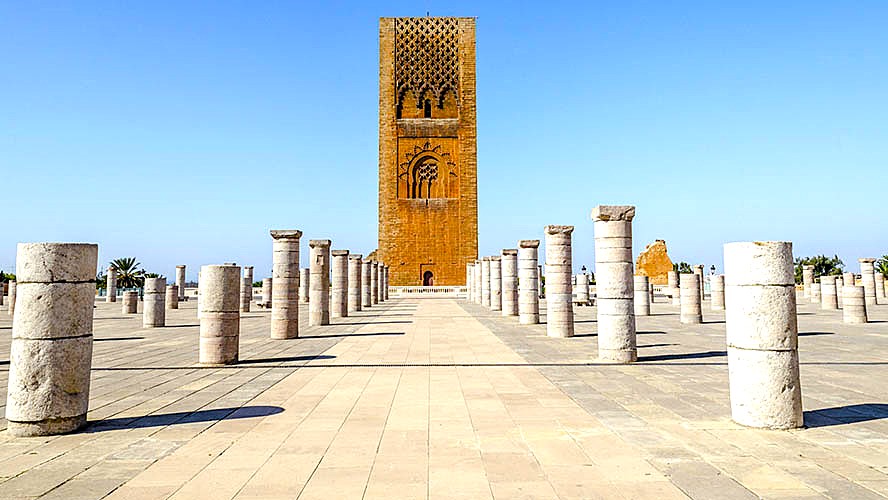
Kasbah of the Udayas
The Kasbah of the Udayas is a fortified citadel overlooking the Atlantic Ocean and the Bou Regreg River. Dating back to the 12th century, the kasbah features narrow alleys, traditional Andalusian gardens, and stunning views of the coastline. Walking through the kasbah, visitors can feel the centuries of history embedded in its walls, from ancient defensive structures to the charming blue-and-white painted houses that define the neighborhood’s unique aesthetic.
Royal Palaces and Museums
Rabat is home to the Moroccan monarchy, and the Royal Palace exemplifies the grandeur of the Alaouite dynasty. Though not open to the public, its impressive gates and surrounding gardens reflect Morocco’s regal heritage. For history enthusiasts, the Mausoleum of Mohammed V offers an exquisite example of traditional Moroccan architecture and honors one of the country’s most revered leaders. Museums such as the Mohammed VI Museum of Modern and Contemporary Art provide insight into Morocco’s evolving artistic landscape, bridging the past and present.
A Blend of Modernity and Tradition
Rabat stands out among Morocco imperial cities for its modern infrastructure paired with deep-rooted tradition. Wide boulevards, cafes, and coastal promenades coexist with centuries-old medinas and historic monuments. This combination makes Rabat ideal for travelers who wish to explore imperial heritage without sacrificing comfort or accessibility. The city’s relaxed pace allows visitors to immerse themselves in Moroccan culture while enjoying contemporary conveniences.
Why Rabat Completes the Imperial Quartet
While Fes embodies spiritual depth, Marrakech radiates vibrant energy, and Meknes impresses with imperial grandeur, Rabat offers a unique balance. Its blend of history, royal significance, and modern life makes it a gateway for travelers seeking a comprehensive understanding of Morocco’s imperial legacy. Visiting Rabat completes the journey through Morocco imperial cities, offering both context and contrast to the other three historic gems.
Planning Your Visit to Morocco’s Imperial Cities
Visiting Morocco’s imperial cities requires a bit of planning to make the most of your journey through these historic gems. Each city has its own rhythm, climate, and cultural nuances, and understanding these details ensures a seamless and enriching experience.
Best Time to Visit
The ideal time to explore Morocco imperial cities is during the spring (March to May) or autumn (September to November). During these months, the weather is mild, avoiding the extreme summer heat or the cooler winter temperatures. Spring offers blooming gardens in Marrakech and fresh landscapes around Meknes and Fes, while autumn provides comfortable conditions for walking through medinas and exploring historic sites.
Transportation Tips Between Cities
Traveling between Morocco’s imperial cities is convenient, with options ranging from trains, buses, private transfers, and guided tours. The train network connects major cities like Fes, Marrakech, and Rabat efficiently, while private transfers offer more flexibility and comfort. For those seeking immersive experiences, guided tours provide local insights, historical context, and access to hidden gems often missed by independent travelers.
Cultural Etiquette and Tips
Respecting local customs is essential when visiting Morocco’s imperial cities. Modest dress is appreciated, especially when entering mosques or religious sites. When exploring medinas and markets, it’s polite to ask before taking photos of people, and bargaining in souks is expected but should be done with respect. Learning a few basic Arabic or French phrases can enhance interactions with locals and create authentic cultural connections.
Must-Have Essentials for Travelers
When exploring these cities, travelers should carry comfortable walking shoes, as medinas often have narrow, uneven streets. A small backpack for water, sunscreen, and a camera is ideal. For those visiting during the warmer months, light, breathable clothing is recommended, while layers are useful in cooler seasons. Having a map or offline navigation app helps in the intricate alleys of Fes and Marrakech, ensuring you don’t miss key sights.
Planning ahead allows visitors to fully immerse themselves in the history, culture, and vibrant life of Morocco’s imperial cities, making the journey both enjoyable and memorable.
Embark on Your Journey Through Morocco’s Timeless Imperial Cities
Exploring Morocco’s imperial cities, Fes, Marrakech, Meknes, and Rabat, is like stepping into a living history book. Each city tells its own story: Fes enchants with spiritual depth and timeless craftsmanship, Marrakech dazzles with vibrant energy and stunning gardens, Meknes impresses with grand architecture and Roman heritage, and Rabat offers a harmonious blend of history and modern life. Together, they provide travelers with a complete journey through Morocco’s rich imperial legacy.
Visiting these cities is not just a sightseeing experience, it’s an immersion into Moroccan culture, architecture, and daily life. Wandering through centuries-old medinas, exploring palaces, and witnessing traditional crafts allows travelers to connect with a Morocco that has endured and evolved for centuries.
